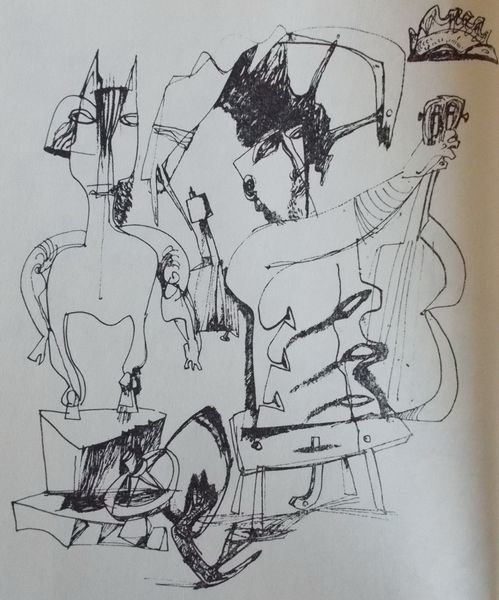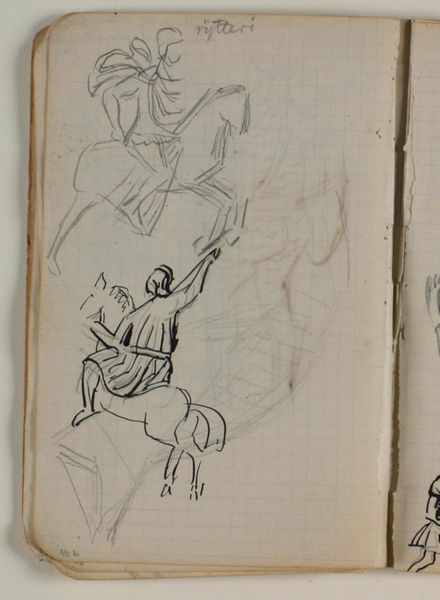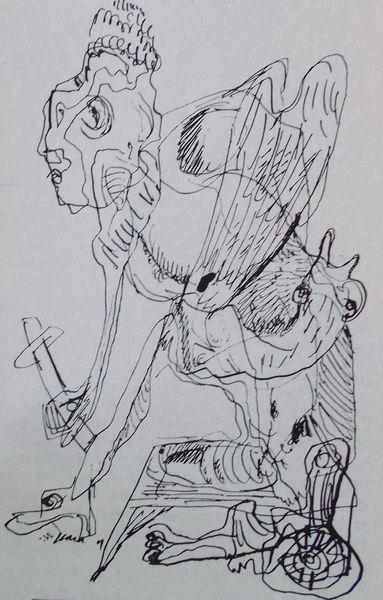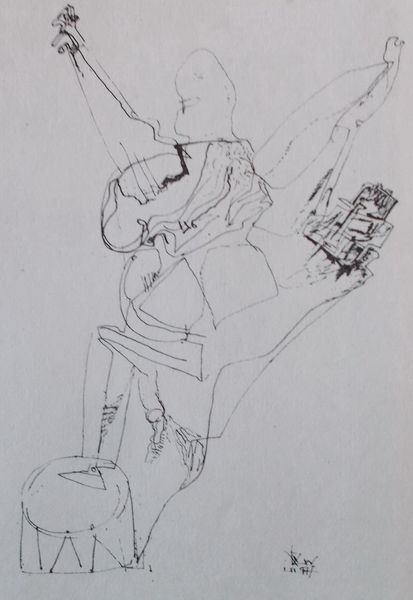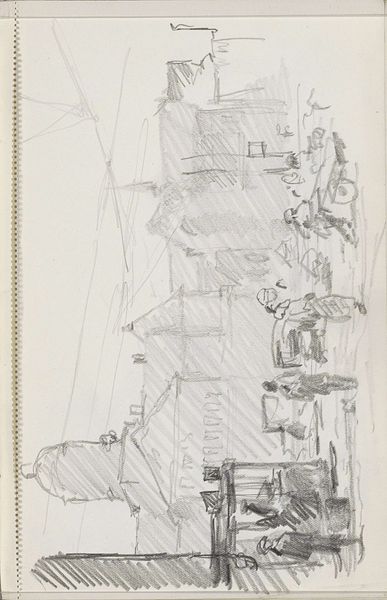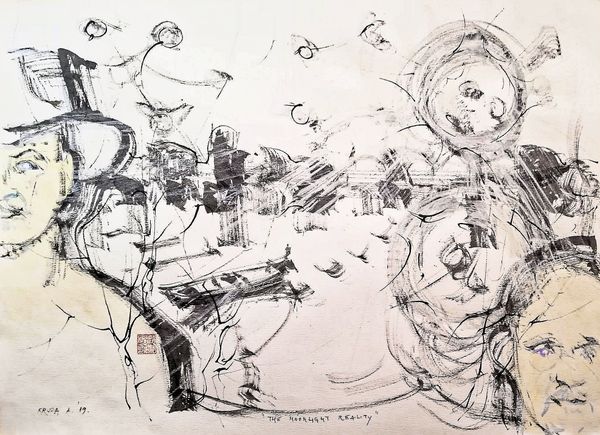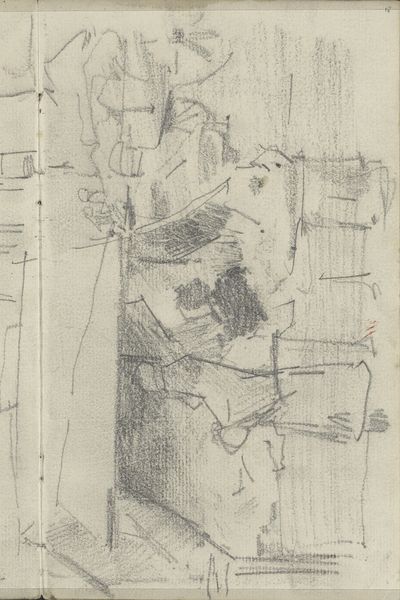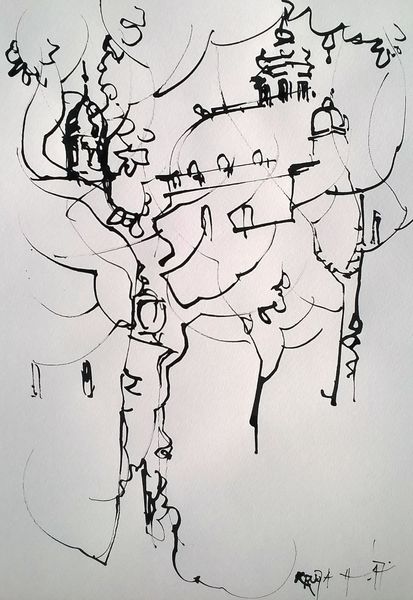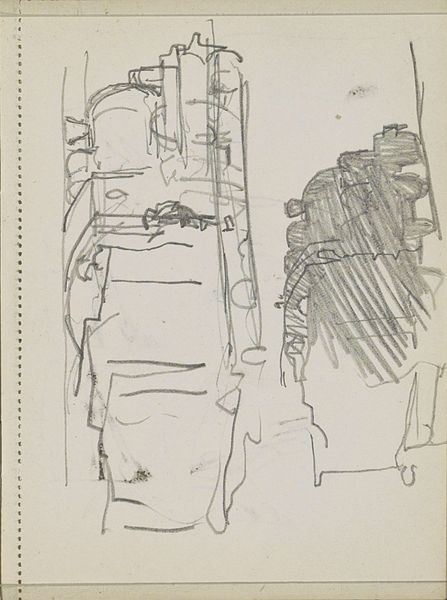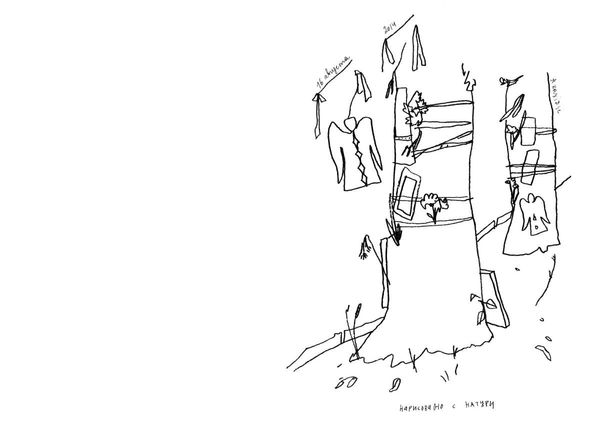
drawing, ink
#
drawing
#
incomplete sketchy
#
fantasy-art
#
figuration
#
personal sketchbook
#
ink
#
idea generation sketch
#
sketchwork
#
ink drawing experimentation
#
sketch
#
sketchbook drawing
#
storyboard and sketchbook work
#
sketchbook art
#
fantasy sketch
#
initial sketch
Copyright: Vasile Kazar,Fair Use
Editor: Here we have Vasile Kazar’s "The Song," created in 1972, an ink drawing with a sketchbook feel. It’s got a haunting, surreal quality to it... almost like figures caught in fragmented narratives. How do you interpret this work? Curator: It's a powerful piece, isn't it? Given the time it was created, 1972, it resonates with a period of significant social and political upheaval, especially in Eastern Europe. These fragmented figures, almost like broken puppets or deconstructed portraits, speak to a sense of displacement and the potential disintegration of identity under oppressive regimes. Look at the figure with the cage-like structure around the head—what does that evoke for you? Editor: Restriction, maybe? A silencing. Curator: Precisely! The lines are scratchy and uncertain. Are these figures trapped by societal expectations, silenced by political forces, or struggling to find their voice? This “song” they’re meant to be singing – is it one of forced compliance or a genuine expression? Editor: It makes you wonder about the role of the artist during that time. Was Kazar using symbolism to hint at societal constraints that couldn't be directly criticized? Curator: Absolutely. Consider feminist theory too. Note how most figures are obscured in a way, resisting clear representation, almost like bodies pushed to the margin and not allowed to have their voice heard. There seems to be no central figure either; the power seems diffuse or unstable. The sketchbook style enhances the sense of something emerging, of tentative exploration rather than definitive statement. Editor: It’s like he's questioning the very notion of a singular narrative or identity. Curator: Exactly! Kazar seems to be inviting us to consider the power dynamics at play. What happens to identity and expression under constraint? What’s the real ‘song’ being sung here? Editor: I see it differently now, it makes you think about not only what's presented, but what is actively hidden, or fragmented. Curator: And how those absences become part of the story. Art can reveal not only what is seen, but what society attempts to silence.
Comments
No comments
Be the first to comment and join the conversation on the ultimate creative platform.
